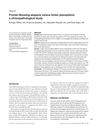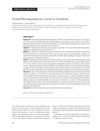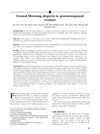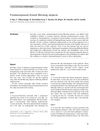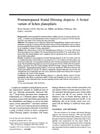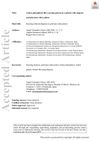Diagnostic and Therapeutic Assessment of Frontal Fibrosing Alopecia
January 2007
in “
Actas dermo-sifiliográficas/Actas dermo-sifiliográficas
”
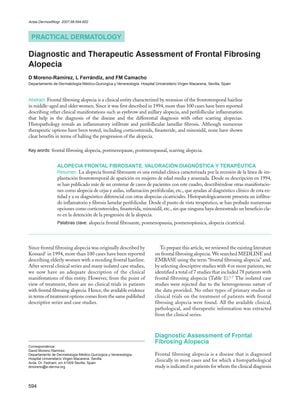
TLDR The document concludes that there are no reliable treatments for frontal fibrosing alopecia, with only temporary benefits from current options.
The 2007 document reviewed the condition of frontal fibrosing alopecia (FFA), noting its typical symptoms and diagnostic markers, such as a receding hairline and eyebrow loss in middle-aged and older women, and histopathological signs like inflammatory infiltrate and fibrosis. It summarized the outcomes of 7 studies involving 78 patients, highlighting the lack of effective treatments despite trials with corticosteroids, finasteride, and minoxidil. The document emphasized the need for histopathological examination for diagnosis and acknowledged the absence of clinical trials and reliable treatment options for FFA, with only temporary benefits observed from some treatments like oral prednisone and limited success with corticosteroids in cases with active inflammation.
